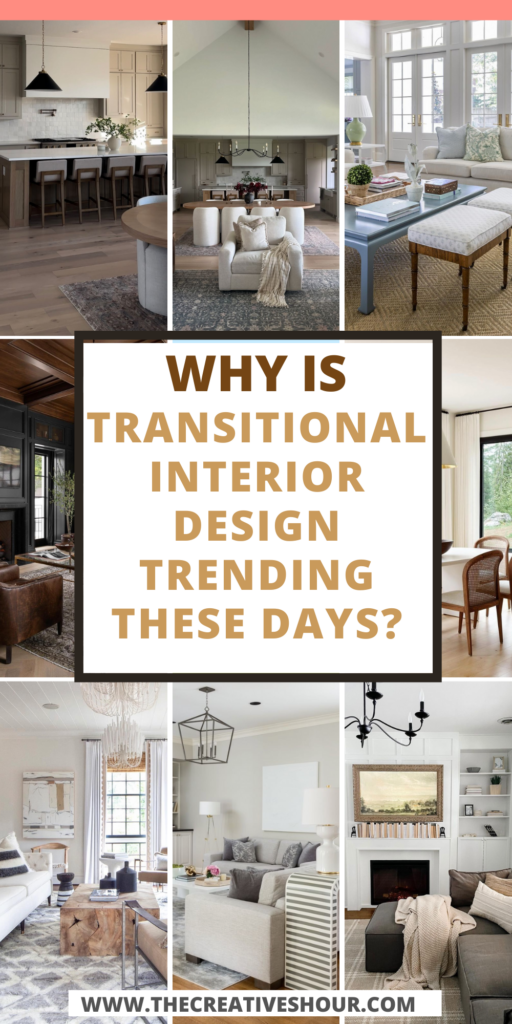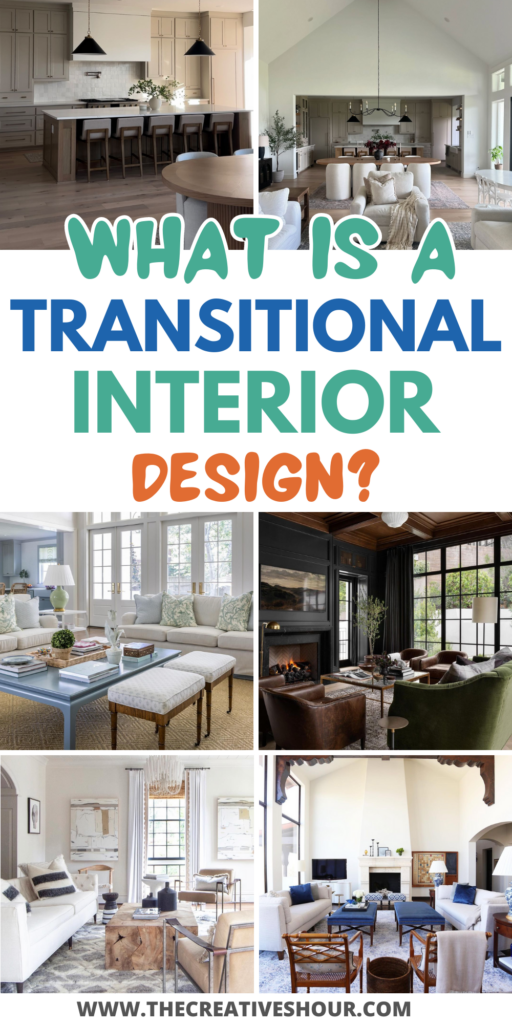
Transitional interior design has quickly become a top choice for homeowners and designers, and it’s easy to see why.
In an era where balance is key, this style offers the perfect blend of modern and traditional elements, creating a look that feels both fresh and familiar.
It provides a harmonious middle ground for those seeking a change without sacrificing comfort or timeless elegance.
But what is it about this design approach that resonates so strongly today? Let’s explore the key elements driving its popularity and why it’s capturing so much attention.
Read – 30 Luxurious And Chic Scandinavian Bathroom Ideas You Will Love
What Is Transitional Style?
Transitional style is a blend of modern and traditional design elements. It combines the clean lines and simplicity of contemporary design with the warmth and timeless appeal of classic decor.
This style often features neutral color palettes, simple yet elegant furniture, and a mix of textures to create a balanced, harmonious space.
The goal is to create a look that feels fresh and updated while maintaining a sense of comfort and familiarity. It’s perfect for those who want a sophisticated space without it feeling too formal or too minimal.
Read – 26 Stylish And Functional Living Room Poufs You Will love
What’s the Difference Between Transitional and Traditional Style?
The key difference between transitional and traditional style lies in their approach to design elements and overall aesthetic.
Traditional style focuses on classic, ornate details with a rich, timeless look. It often includes decorative woodwork, intricate patterns, and formal furniture that exudes elegance and history. The color palette tends to be warm, with deep tones like burgundy, gold, and rich browns.
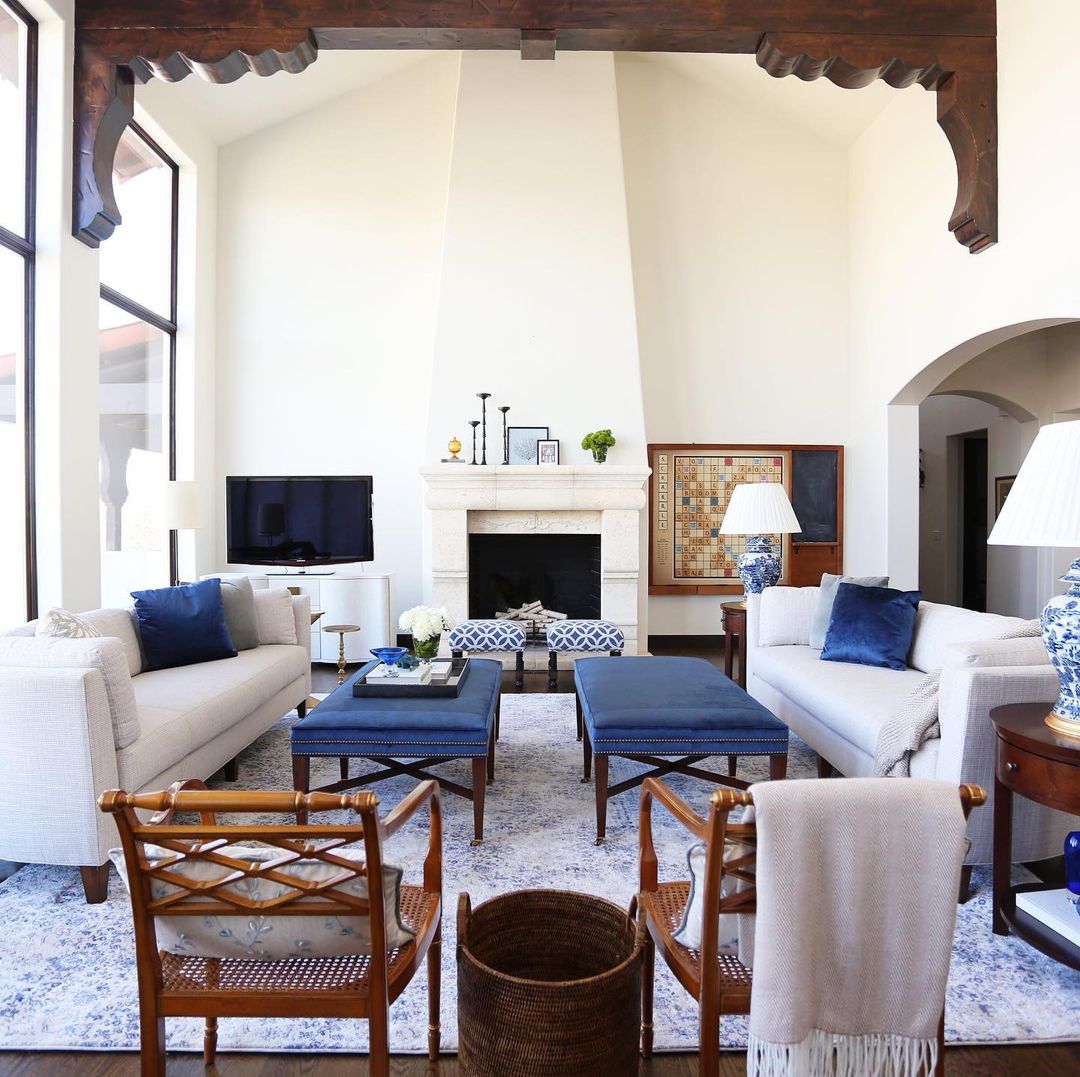
Image by benjaminmoore
Transitional style, on the other hand, softens those traditional elements by blending them with modern, streamlined features. While it keeps some of the classic warmth, it adds a fresh, clean aesthetic with neutral color palettes, simpler lines, and less ornamentation. The result is a more updated, versatile look that feels both timeless and contemporary.
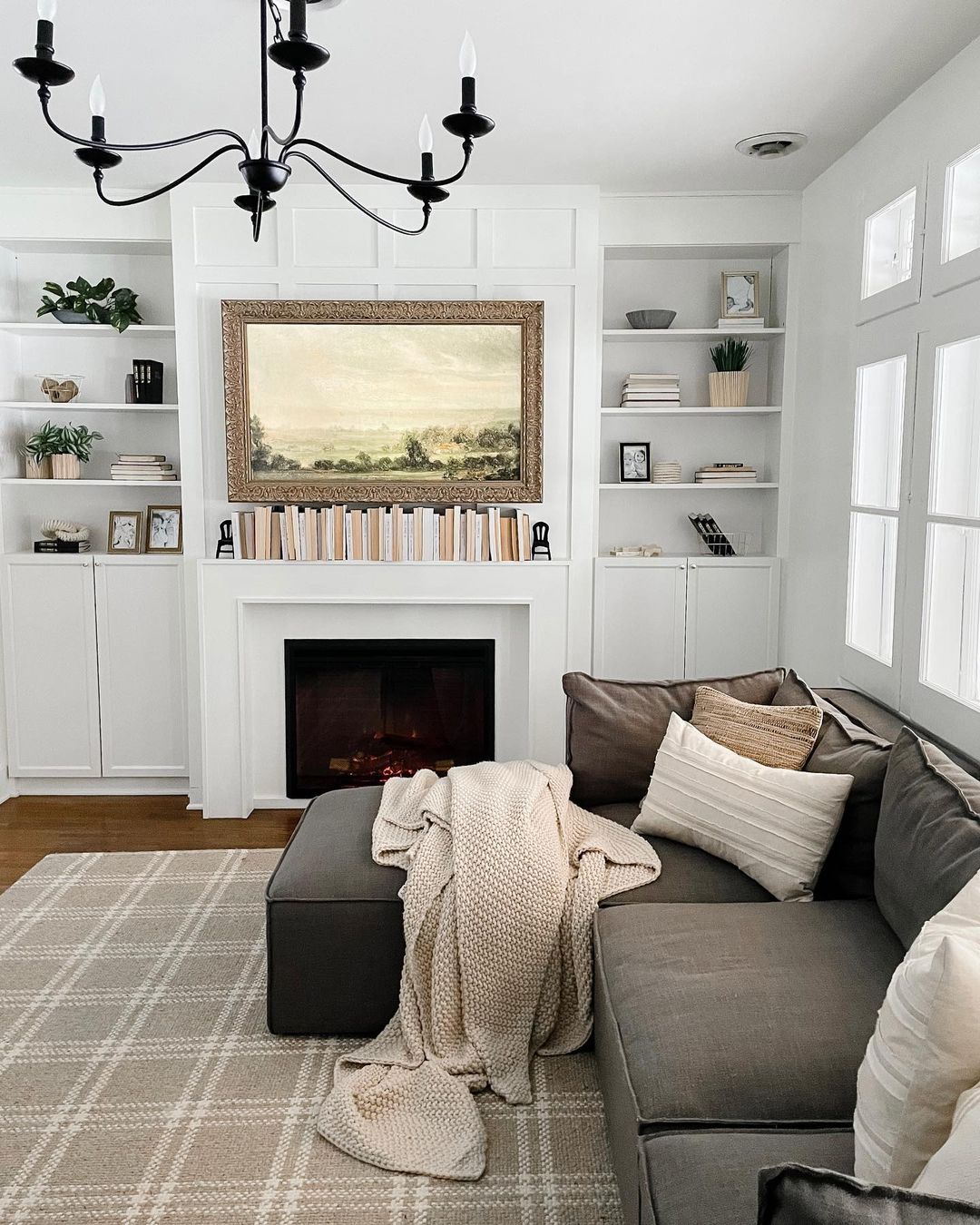
Image by jaymesquires
In essence, traditional style is more formal and ornate, while transitional style strikes a balance between classic comfort and modern simplicity.
How to Decorate in Transitional Style
Decorating in transitional style is all about striking the perfect balance between traditional charm and modern simplicity. Here are some key tips to achieve the look:
1. Choose A Neutral Color Palette
Neutral tones like beige, gray, white, and taupe serve as the foundation of transitional design.
These soft hues provide a calming backdrop, setting the stage for both classic and modern elements to shine.
The neutrality of the palette allows for flexibility in accent pieces, making it easier to introduce bolder colors or textures in a subtle, sophisticated way.
“Neutral palettes offer a calming foundation for transitional spaces, allowing for flexibility in adding both traditional and modern elements. A warm neutral backdrop with pops of accent colors creates a cozy, inviting atmosphere while maintaining sophistication.” — Toussaint Derby, Lead Designer at Blue Derby Interiors
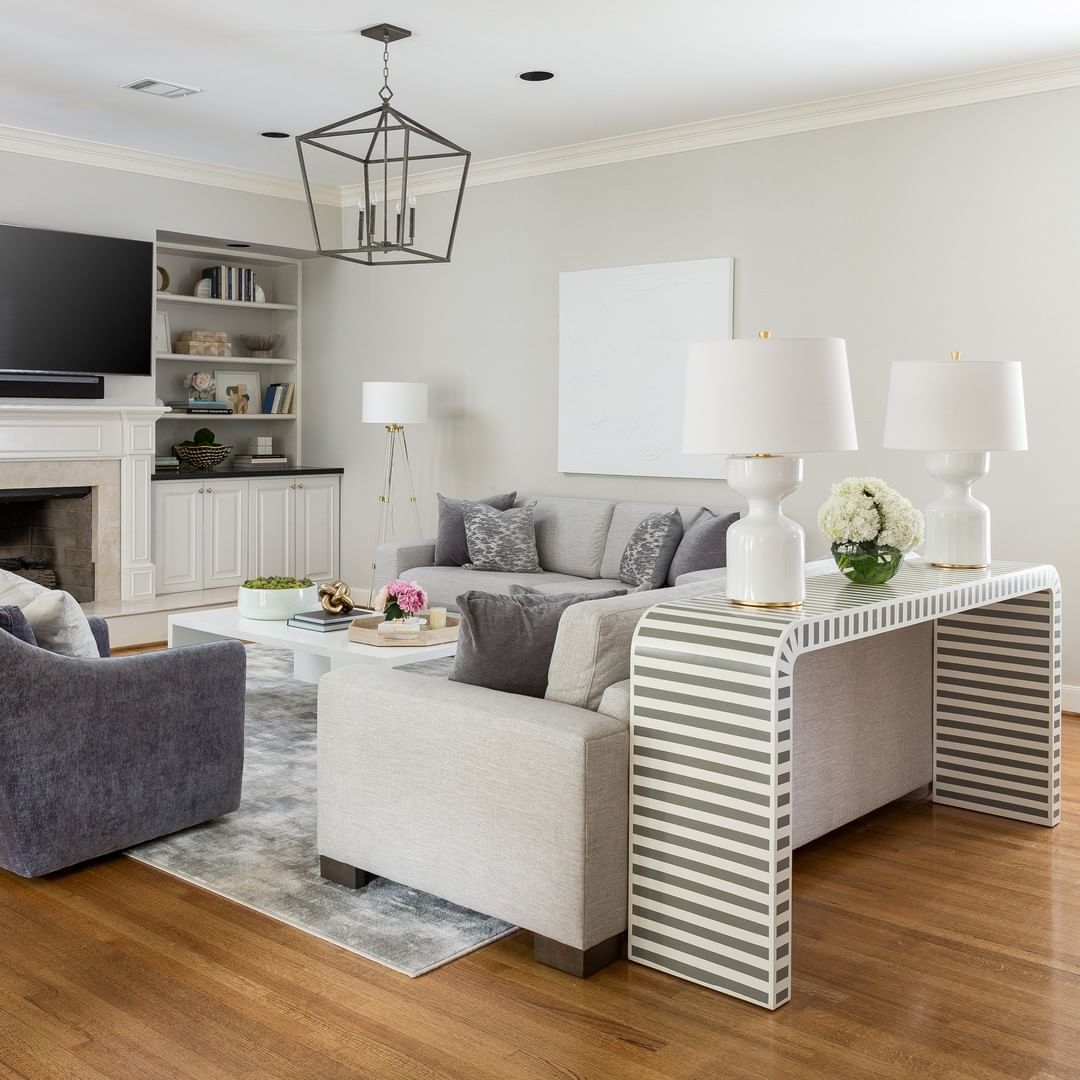
Image by laceymichalekinteriors
Read – 35 Beautiful Small Dining Room Lighting Ideas
2. Mix Traditional and Modern Furniture
The hallmark of transitional style is the ability to blend contemporary furniture with more traditional, timeless pieces.
For example, a clean-lined, modern sofa paired with an antique wooden coffee table creates visual contrast without feeling mismatched.
The key is to maintain balance—ensuring no one style dominates the space. This fusion of sleek modernity with elegant tradition brings both freshness and character to a room.
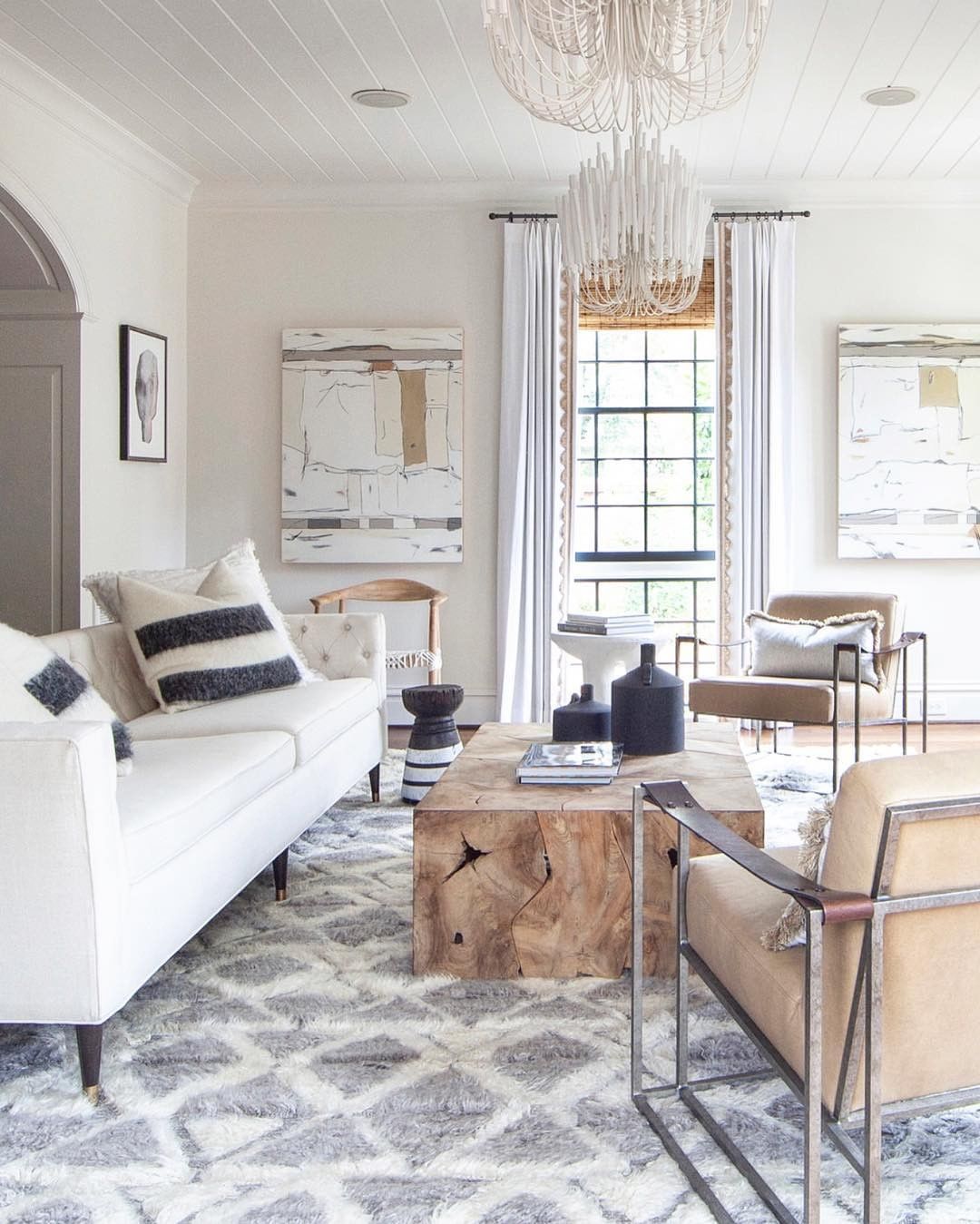 Image by noirfurniture
Image by noirfurniture
“The secret to a beautiful transitional space is the blend of old and new. Combine sleek, contemporary furniture with classic elements to achieve balance. This juxtaposition adds depth and ensures the room feels curated, not cluttered.” — Kimberley Peck, Principal of Kimberly Peck Architect.
3. Keep Lines Simple
To maintain the streamlined nature of transitional design, it’s important to opt for furniture with clean, simple lines.
Avoid ornate details or heavy decoration that can make the space feel too traditional or busy. Instead, choose pieces with smooth, understated silhouettes that exude sophistication without overwhelming the room.
This approach ensures that your space feels open and uncluttered, while still being elegant.
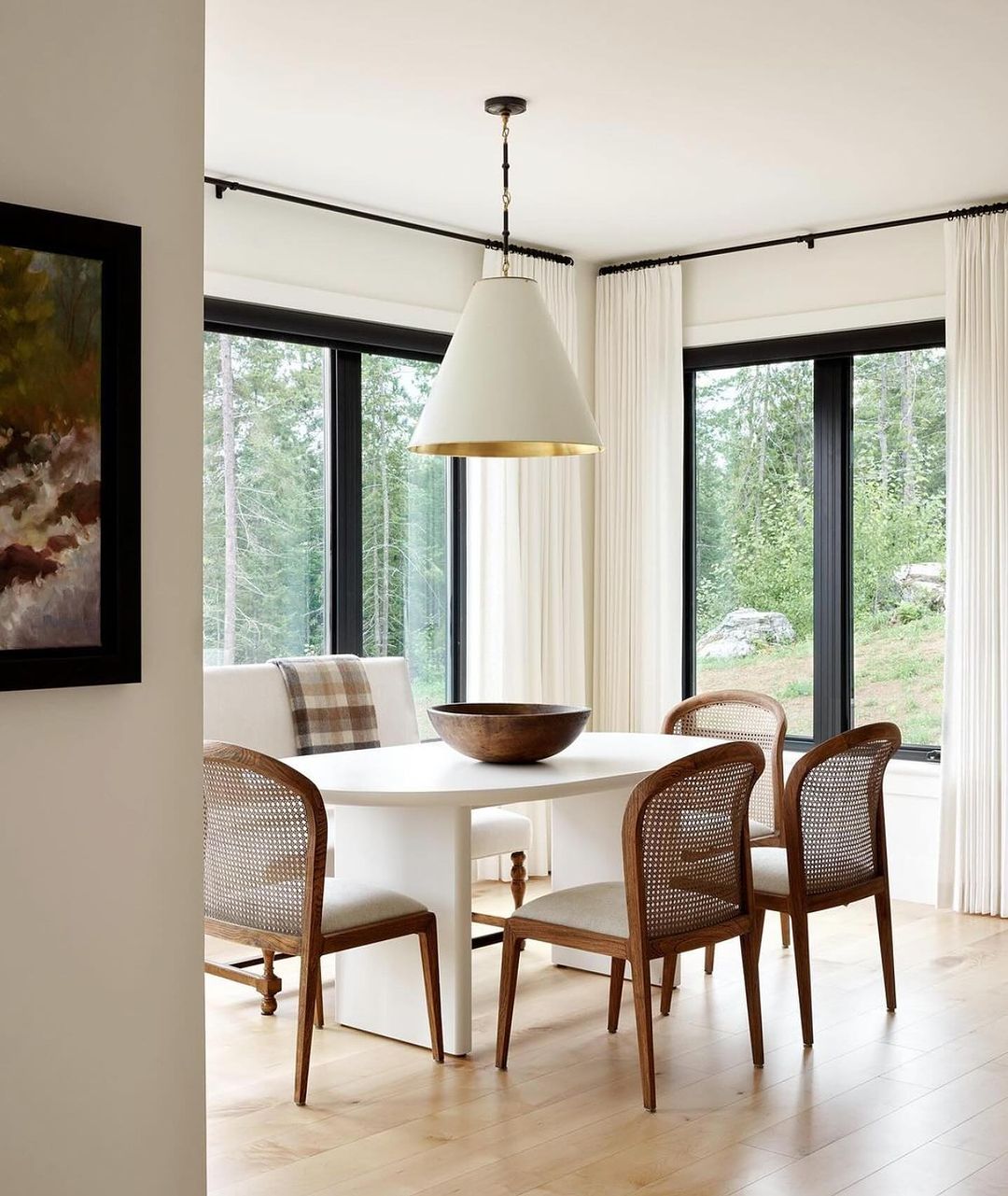 Image by candaceplotzdesign
Image by candaceplotzdesign
“When decorating with neutrals, simplicity is key. Stick to clean lines in furniture to avoid overwhelming the space. Layering tones of beige, gray, or taupe adds depth, while keeping the overall look sleek and modern.” — House of Grey, Design Studio.
4. Blend Textures
Layering different textures is essential to creating depth and interest in a transitional space.
Materials like velvet, linen, wood, and metal add contrast and richness to a neutral palette. A linen sofa, for instance, paired with a velvet cushion or a wooden coffee table, creates tactile variety without overpowering the overall aesthetic.
These combinations add warmth and dimension, making the room feel more inviting and visually dynamic.
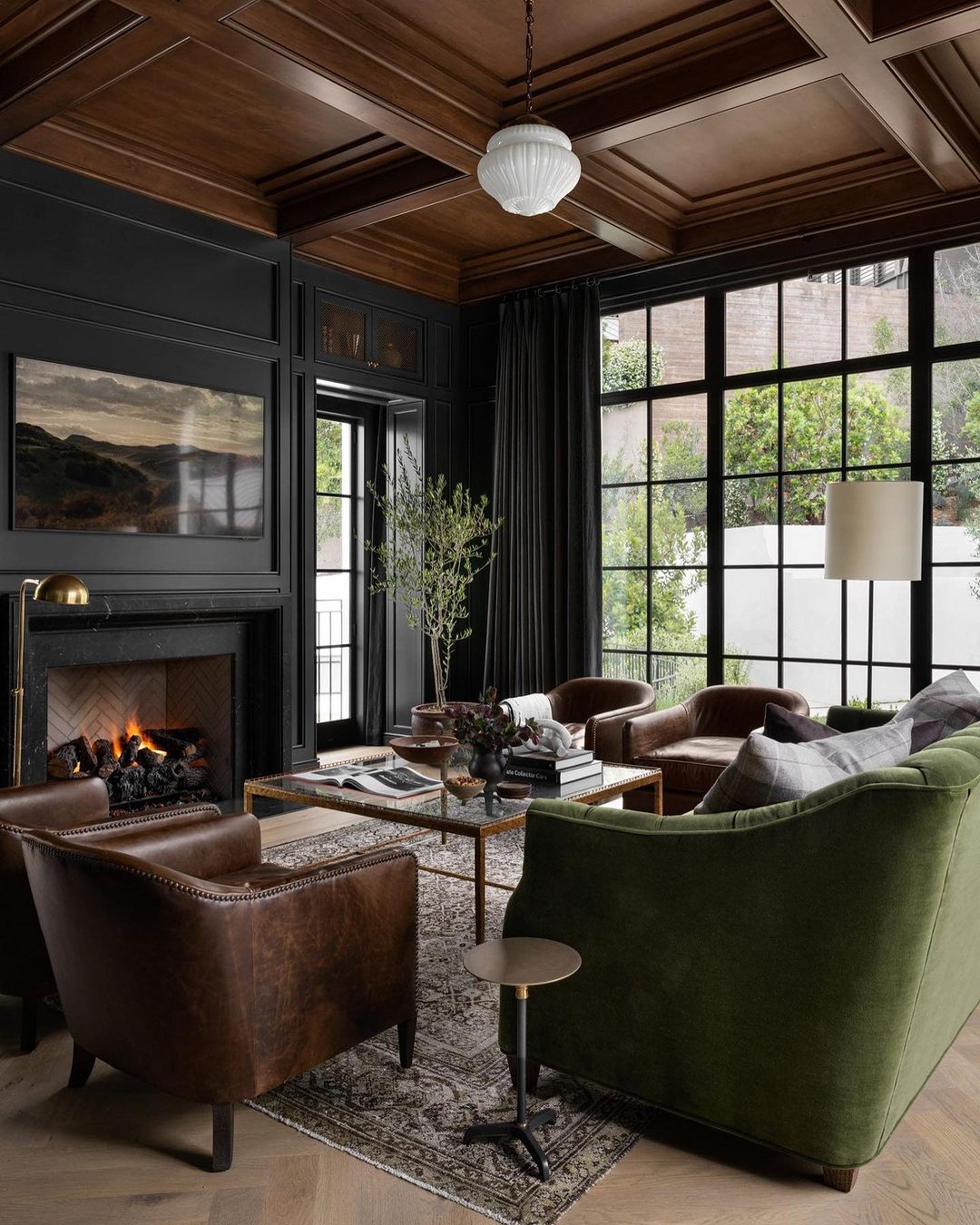 Image by candaceplotzdesign
Image by candaceplotzdesign
“Texture is essential in neutral spaces to prevent them from feeling flat. Layering materials like wood, linen, and metal creates interest and depth while still keeping the room cohesive and elegant.” — Ellen Hamilton, Founder of Hamilton Design Associates.
5. Add Minimal Accents
In transitional design, less is more when it comes to colorful accessories.
Select decor pieces that are simple yet impactful. A modern vase or a classic lines lamp can serve as elegant focal points without overwhelming the room.
Minimalist decor enhances the balance between traditional and modern elements, ensuring that your space feels thoughtfully curated rather than overly decorated.
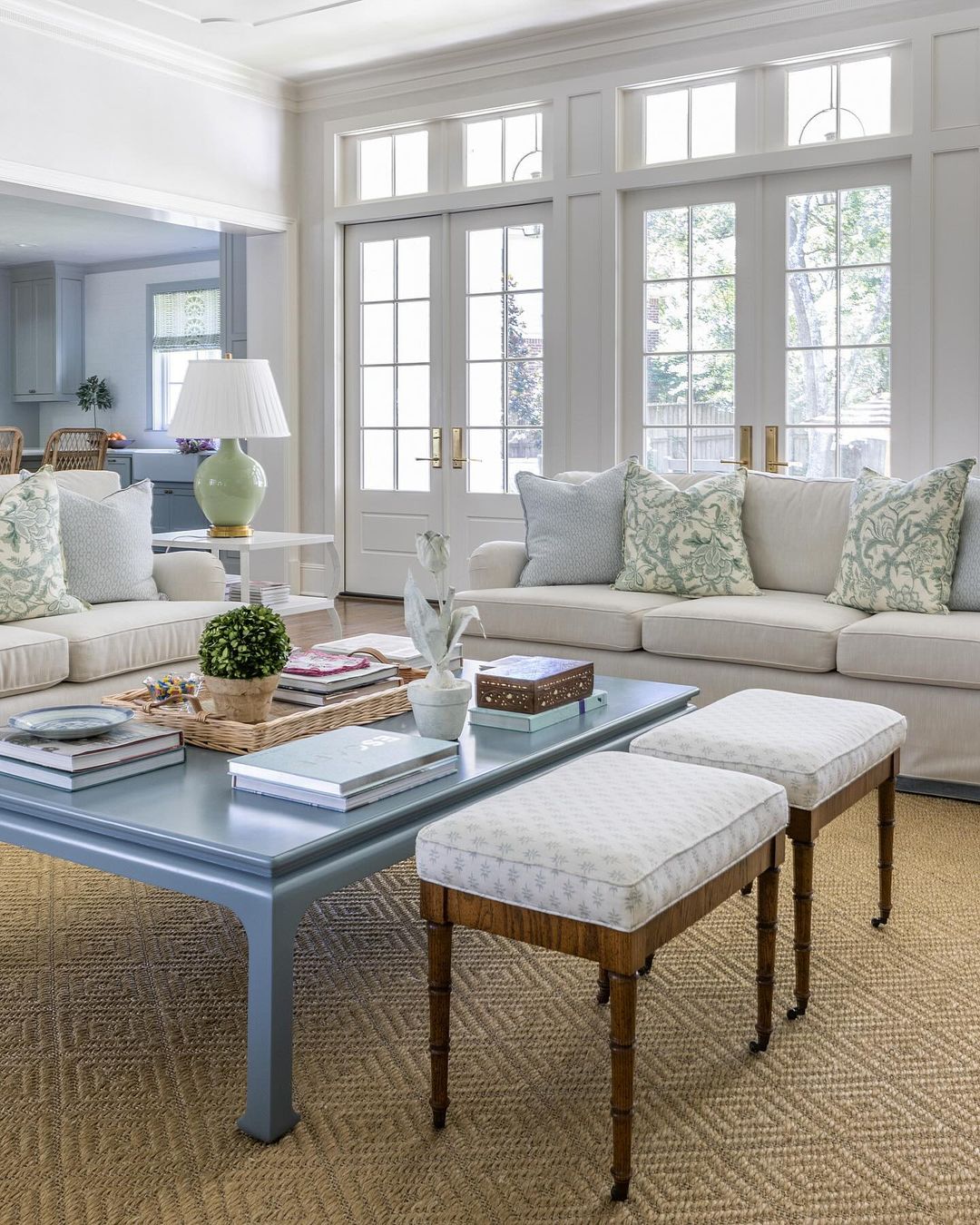 Image by jessicalevantiques
Image by jessicalevantiques
“A minimalistic approach works wonders in transitional design. Choose a few key accent pieces that reflect your personal style, like a modern lamp or a traditional vase, to create focal points without over-cluttering the room.” — Julia Bennett, Senior Designer at Décor Aid.
6. Balance Warmth and Elegance
While transitional style leans toward clean and streamlined modern aesthetics, it doesn’t sacrifice warmth.
Incorporate cozy elements like plush throws, soft rugs, or inviting light fixtures to maintain a sense of comfort. This approach ensures that even in a refined and elegant space, there’s a feeling of warmth and approachability.
By combining the cozy features of traditional design with the sleekness of modern decor, you create a welcoming atmosphere that feels both fresh and timeless.
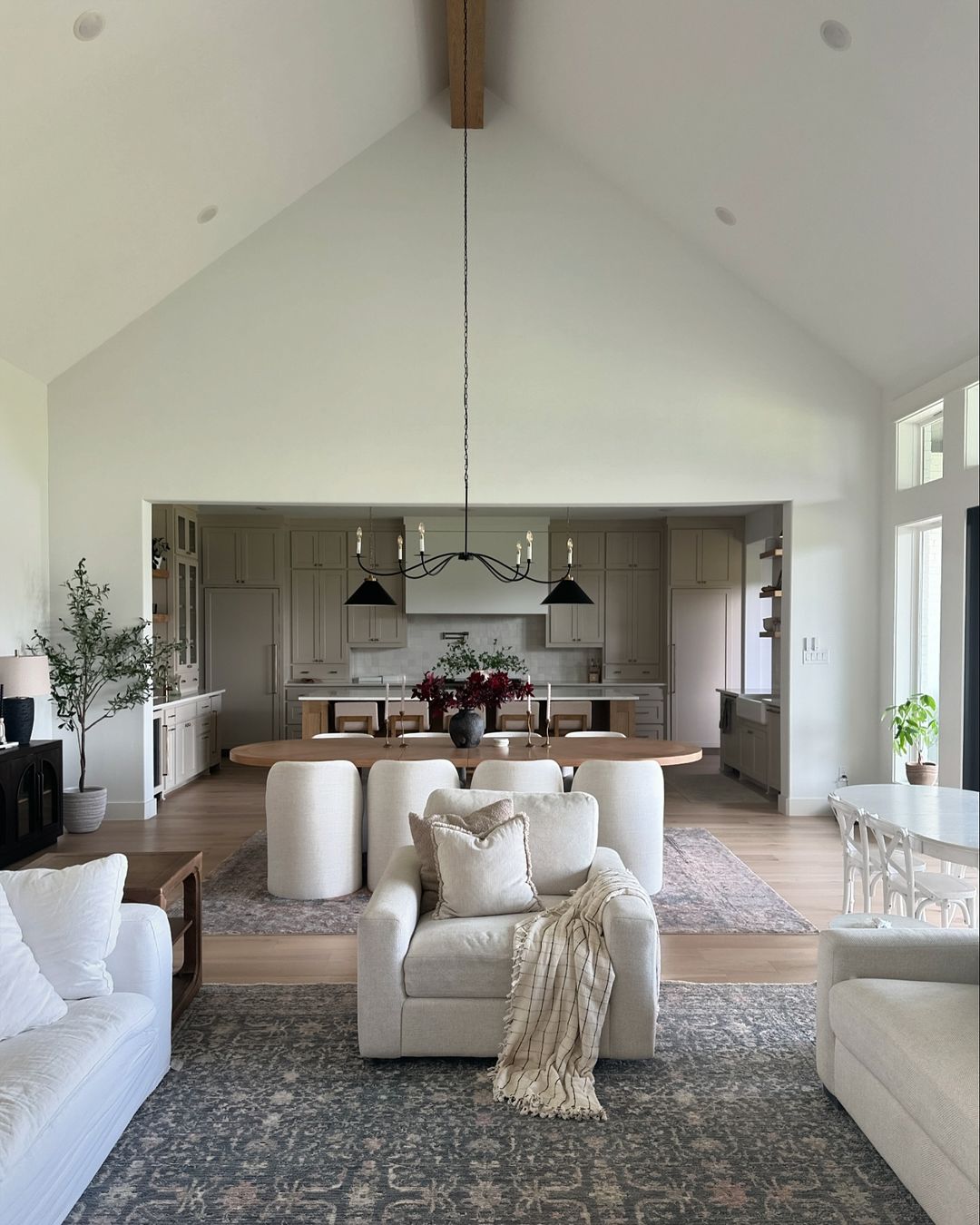 Image by transitionalmodernhome
Image by transitionalmodernhome
“Warm undertones, like creamy whites or rich browns, offer a sense of coziness. Pairing them with modern, sleek furniture maintains elegance while making the space feel inviting and balanced.” — StoneGable Blog, Interior Design Expert.
Read – 29 Functional And Stylish Coat Hooks You Will Love
7. Start with Statement Lighting
Statement lighting is not just about illumination; it serves as a focal point in transitional design.
Opt for fixtures that merge contemporary shapes with traditional materials.
Whether it’s a sleek chandelier or modern pendant lights with brass or bronze finishes, statement lighting elevates the room while tying together both design styles.
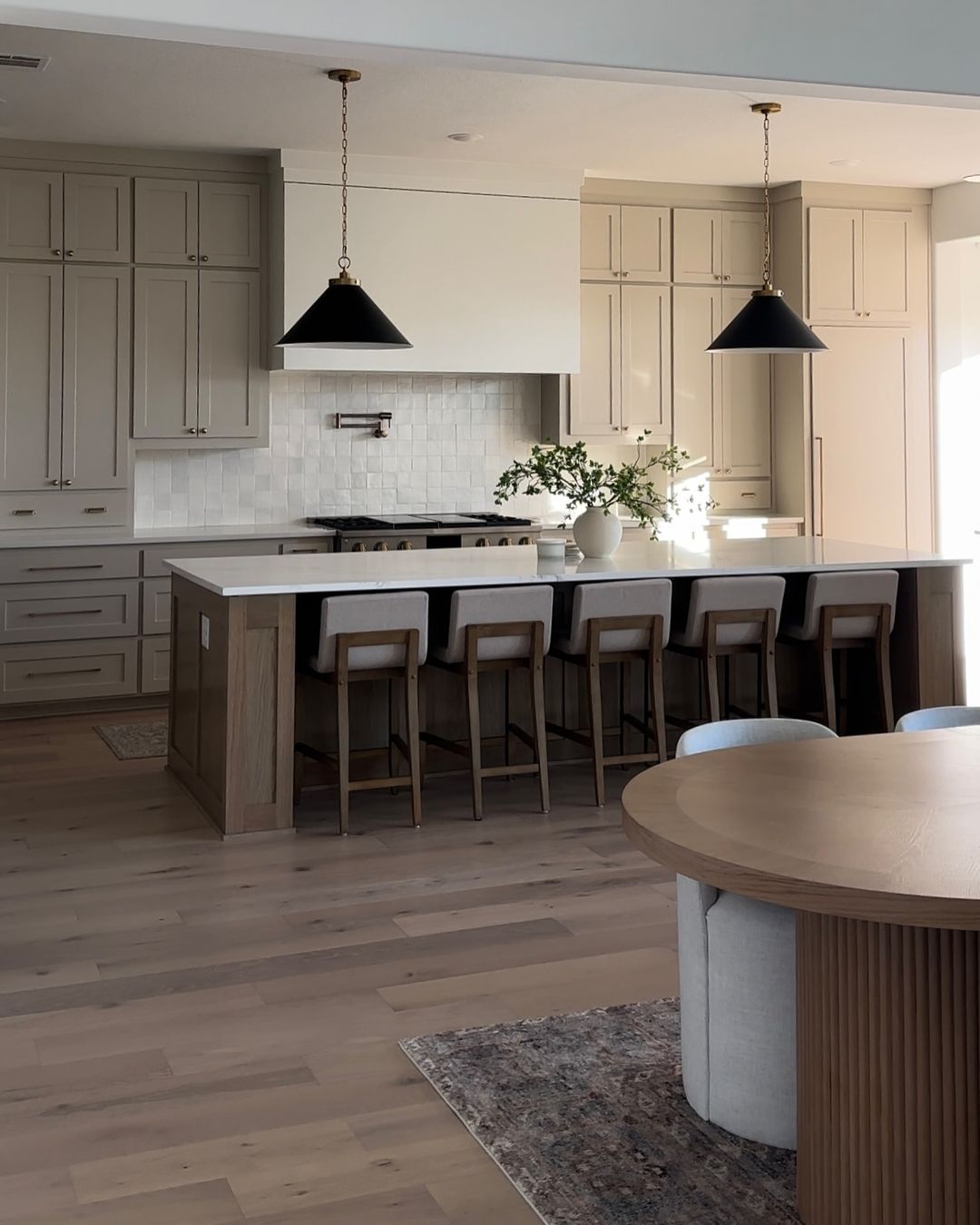 Image by transitionalmodernhome
Image by transitionalmodernhome
“In transitional design, lighting acts as both a functional and decorative element. Choose statement lighting fixtures that blend modern shapes with classic materials, such as a sleek chandelier with brass accents.” — Justina Blakeney, Founder of The Jungalow.
8. Opt for Timeless Art Pieces
Art in transitional spaces can bridge the gap between eras. Choose timeless pieces that either modernize the room or bring in classical elegance.
Abstract prints can complement modern furniture, while traditional portraits of landscapes pair beautifully with contemporary accents, adding layers of depth and personality to your design.
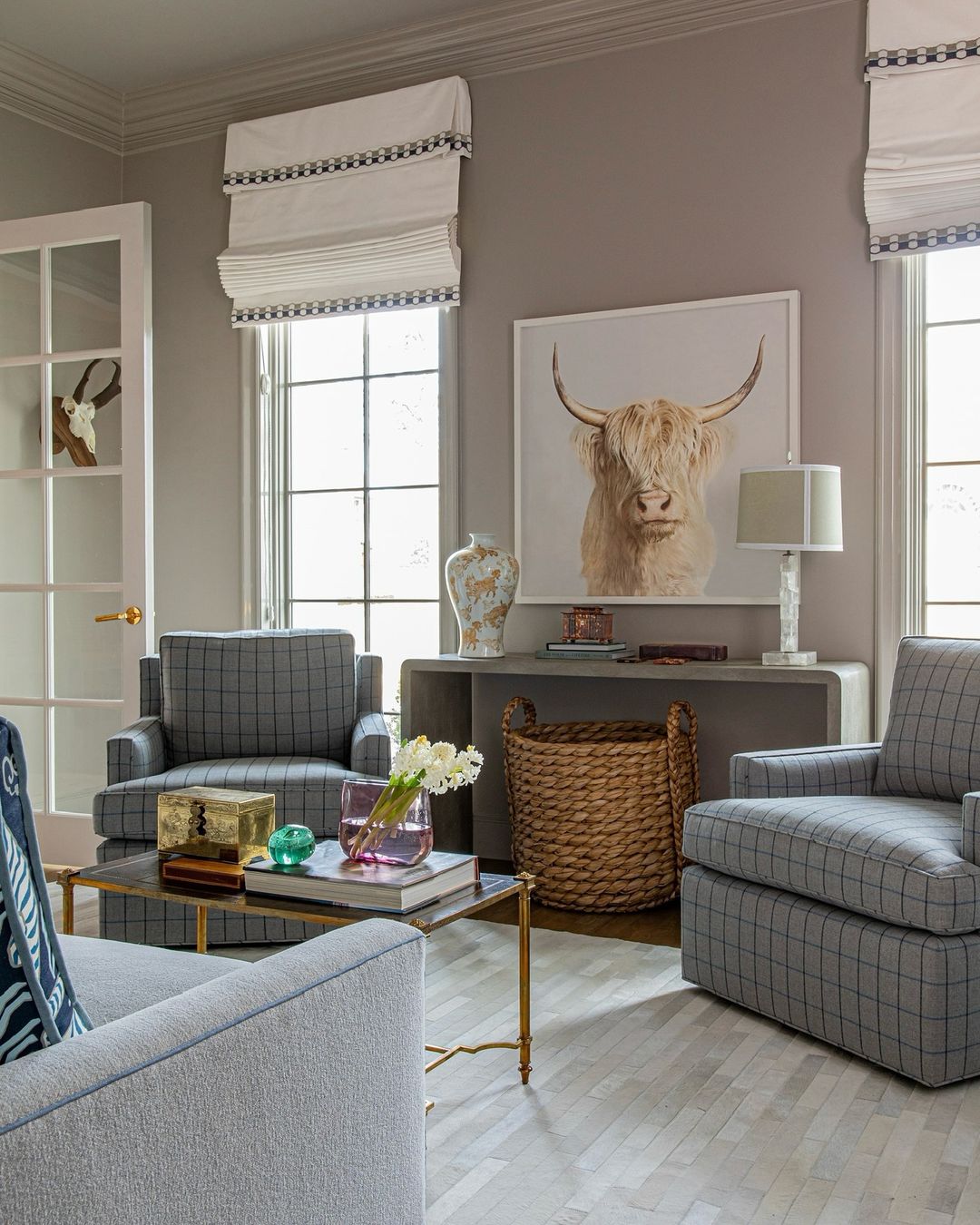 Image by amys_interiors
Image by amys_interiors
“Art plays a significant role in transitional design. Whether it’s modern abstract paintings or classic portraits, art should bridge the gap between traditional and contemporary elements, adding personality without dominating the space.” — Emily Henderson, Founder of Style by Emily Henderson.
9. Focus on Symmetry
Symmetry is essential for creating balance and harmony in transitional spaces.
Symmetrical arrangements of furniture, like pairing two identical sofas or matching end tables, enhance the sense of order.
This structured layout ensures the blend of traditional and modern pieces feels intentional and cohesive, offering visual satisfaction.
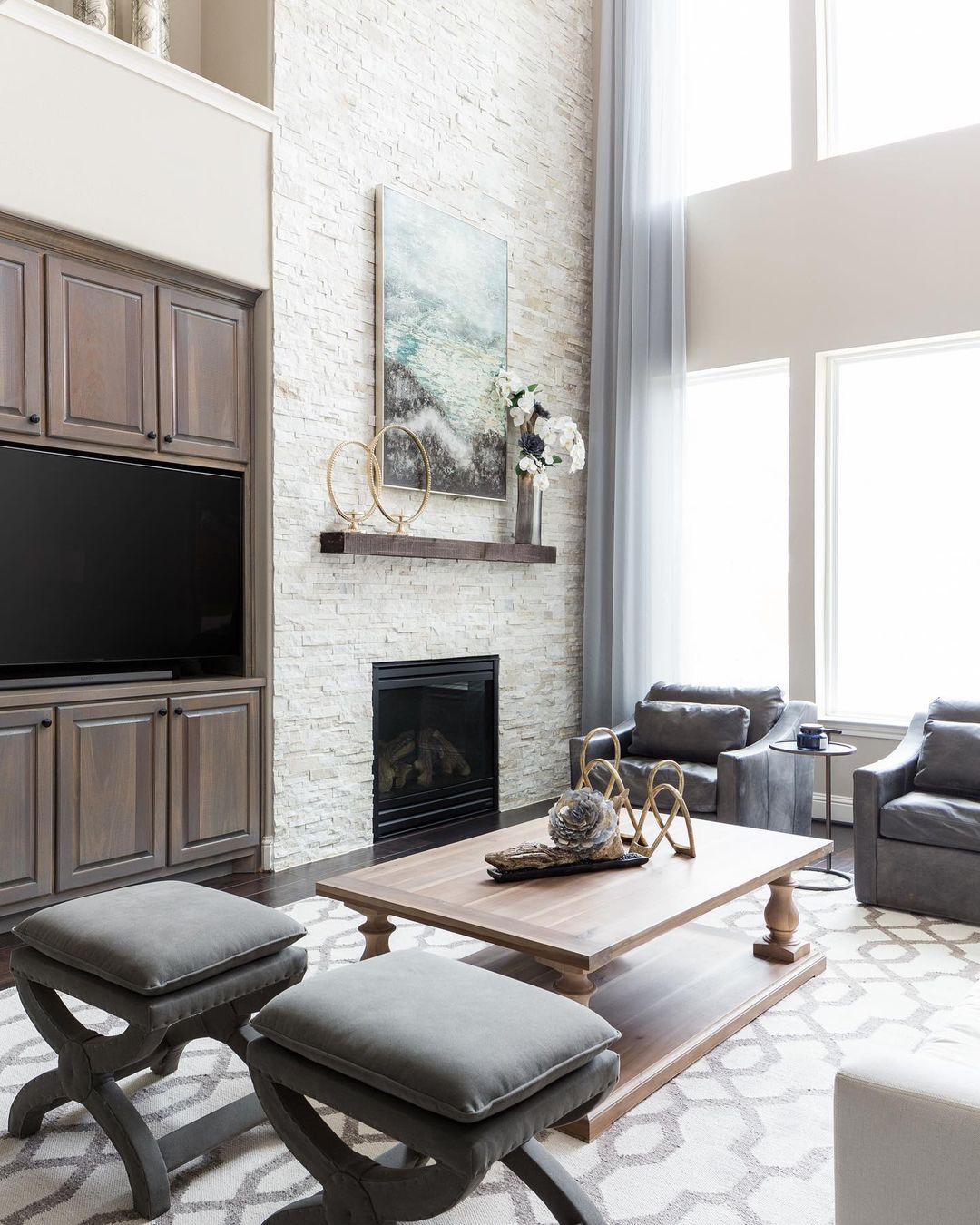 Image by nikolestarrinteriors
Image by nikolestarrinteriors
“Symmetry is a fundamental principle in transitional style. Pairings such as matching armchairs or balanced transitional decor arrangements create a sense of order and calm. It’s a subtle way to bring structure into a room while keeping it elegant.” — Amber Lewis, Founder of Amber Interiors.
10. Choose Quality Over Quantity
Transitional style focuses on carefully selecting each item to ensure longevity and quality.
Instead of cluttering a room with trendy decor, invest in fewer, high-quality pieces that stand the test of time.
These choices create a sophisticated space that feels complete and intentional, rather than overcrowded or overly designed.
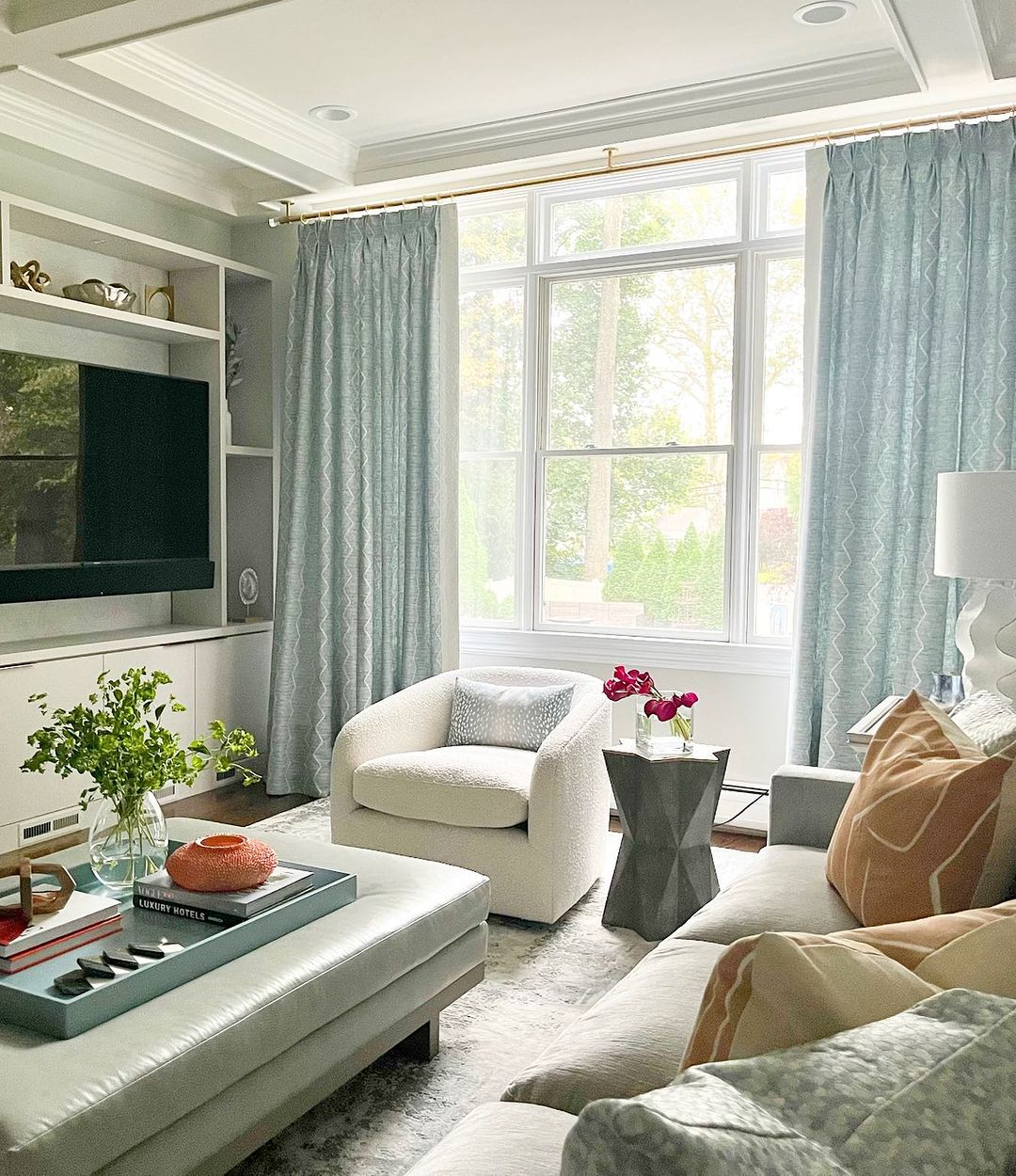 Image by lauriedigiacomointeriors
Image by lauriedigiacomointeriors
“In transitional spaces, every piece counts. Invest in high-quality furniture and decor that have longevity. Fewer, well-chosen pieces not only ensure a timeless look but also prevent the space from feeling cluttered or over decorated.” — Joanna Gaines, Founder of Magnolia Home.
11. Add Personality with Accessories
In transitional design style, accessories should be meaningful, adding personal flair without overwhelming the space.
Choose pieces that reflect your story, such as a vintage mirror or unique sculpture.
These items contribute to the overall aesthetic and become conversation starters, connecting the homeowner’s personality with the design.
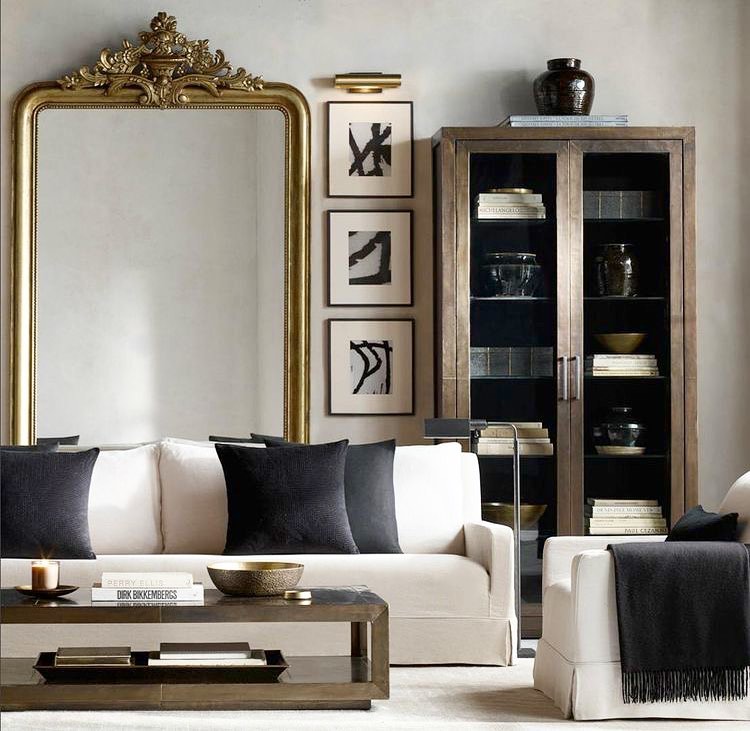 Image by lizgaffneydesign
Image by lizgaffneydesign
“Accessories should tell a story, reflecting the homeowner’s personality. Whether it’s a vintage mirror or a contemporary sculpture, these items add depth to the space and tie the design elements together.” — Nina Magon, Founder of Contour Interior Design.
12. Embrace Natural Elements
Natural materials like wood, stone, and greenery offer a perfect counterbalance to sleek modern elements in transitional design.
Introducing these organic textures creates warmth and a sense of tranquility while keeping the overall aesthetic grounded. This connection to nature helps soften the space and maintain its timeless quality.
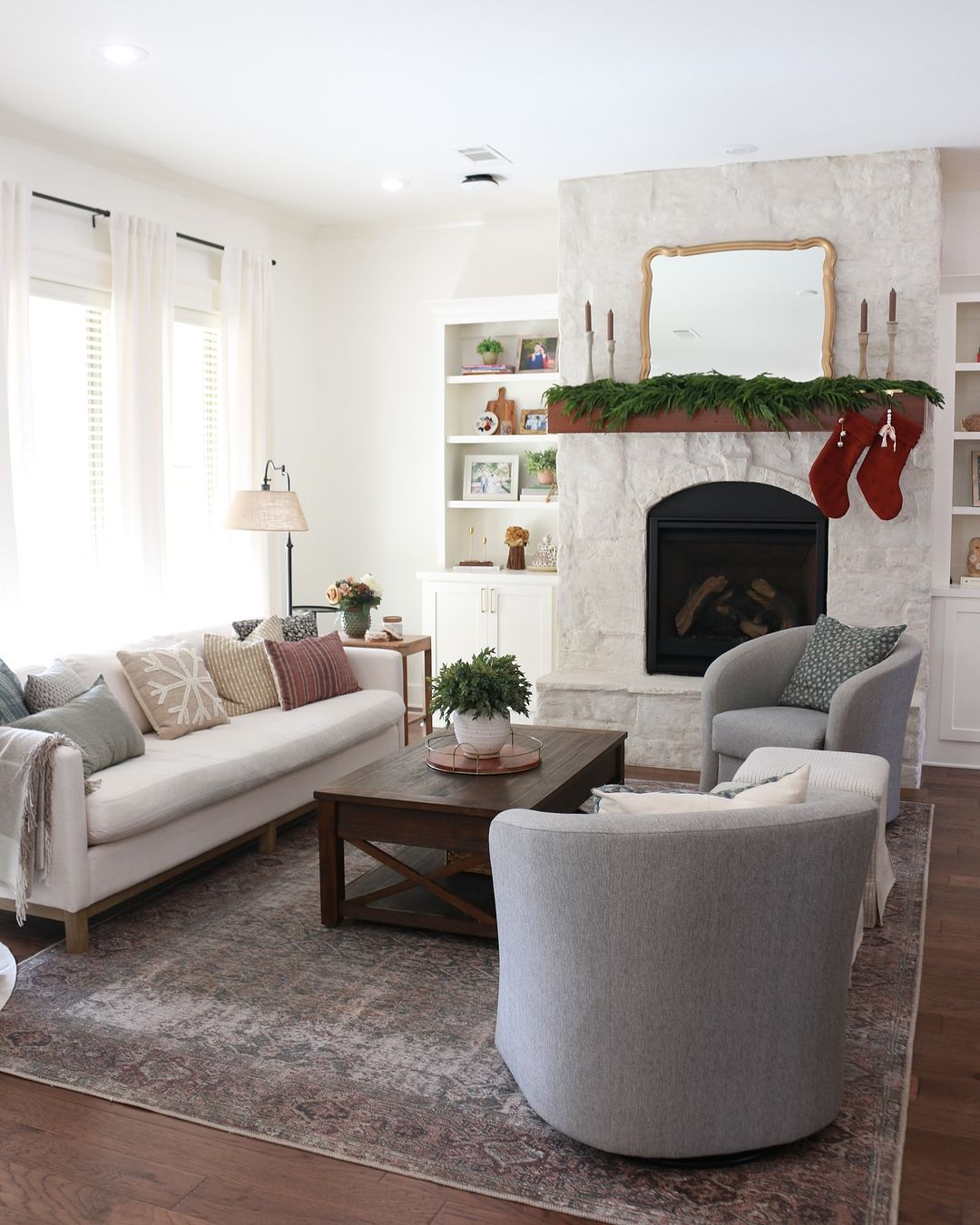 Image by lifewithmoresummer
Image by lifewithmoresummer
“Bringing natural elements like wood, stone, and greenery into a transitional space helps soften the modern features. Natural materials ground the room and add organic warmth, which is essential in keeping the space balanced and inviting.” — Bobby Berk, Interior Designer, Queer Eye.
13. Layer Rugs for Added Comfort
Layering rugs introduces both texture and comfort, which are key in transitional decorating style. Start with a neutral base rug and layer a patterned or textured one on top.
This technique not only adds warmth but also helps define different areas within an open-plan layout, such as a transitional living room or transitional dining room.
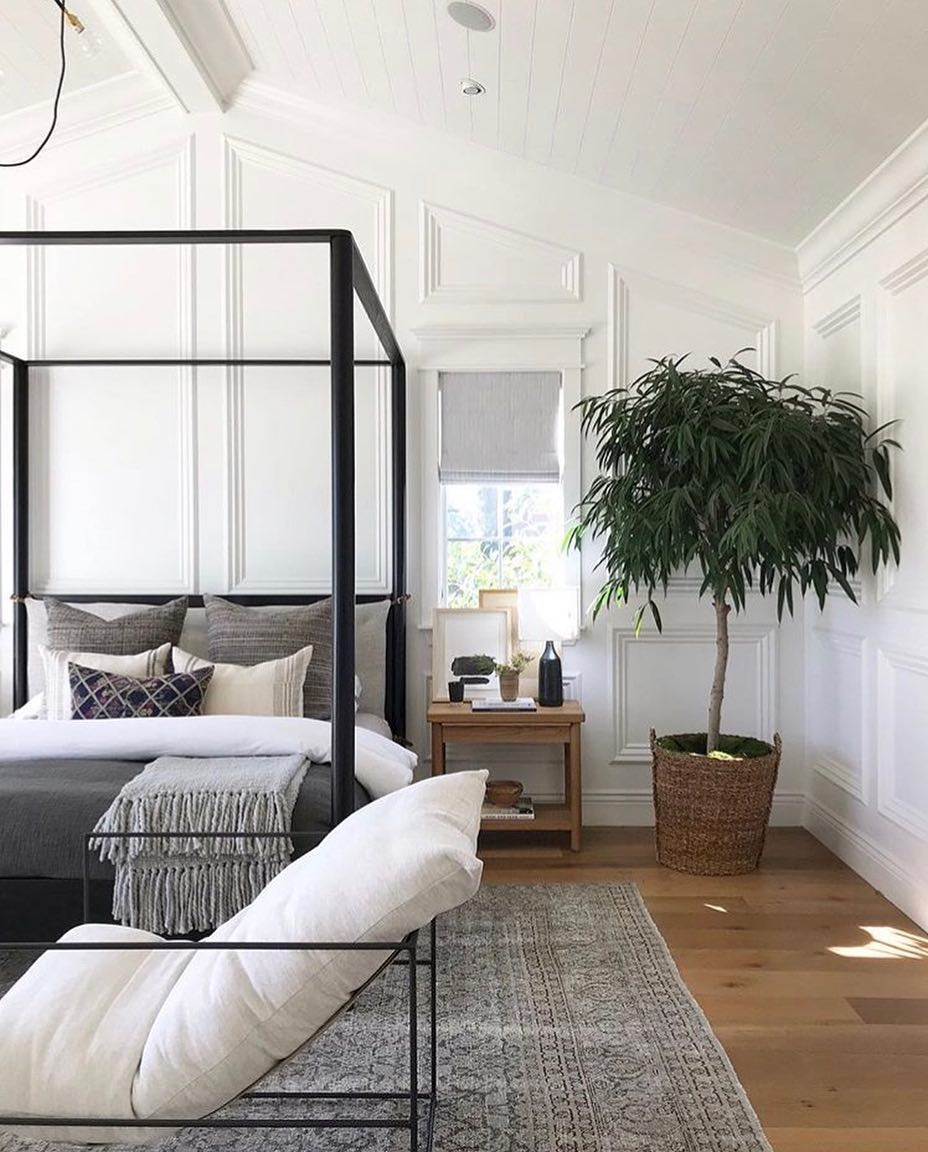
Image by ginghamstreet
“Layering rugs of different textures and materials adds an extra layer of comfort and visual interest to transitional spaces. Start with a neutral base rug and layer a more textured or patterned one on top to enhance both warmth and style.” — Kelly Wearstler, Founder of Kelly Wearstler Design.
Read – 25 Most Beautiful Attic Bedroom Ideas You Will Love
14. Play with Scaled Patterns
Patterns in transitional style home are all about balance. To keep the space from feeling too busy or monotonous, mix patterns of varying scales.
For example, a large, subtle rug pattern pairs well with smaller, intricate patterns on throw pillows or drapes. This layering of patterns keeps the design visually dynamic while remaining cohesive.
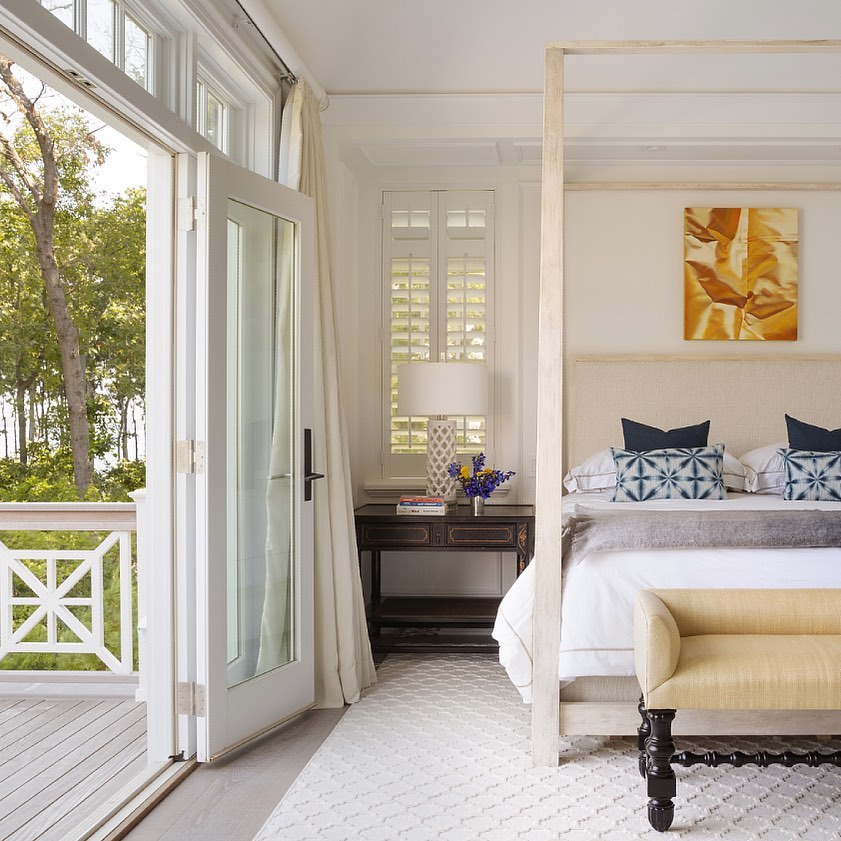 Image by smirosarchitects
Image by smirosarchitects
“Mixing patterns in transitional style can be tricky, but the key is to vary the scale. Choose a large, subtle pattern for a rug or curtains and smaller, more intricate patterns for pillows or throws. This keeps the space visually dynamic without feeling overwhelming.” — Sarah Sherman Samuel, Interior Designer & Blogger.
15. Use Mirrors to Open Up the Space
Mirrors not only reflect light but also create an illusion of space in transitional interiors. A large, well-placed mirror can make a room feel brighter and larger, while also serving as an elegant focal point.
The style of the mirror, whether ornate or minimalist, should complement the room’s overall design.
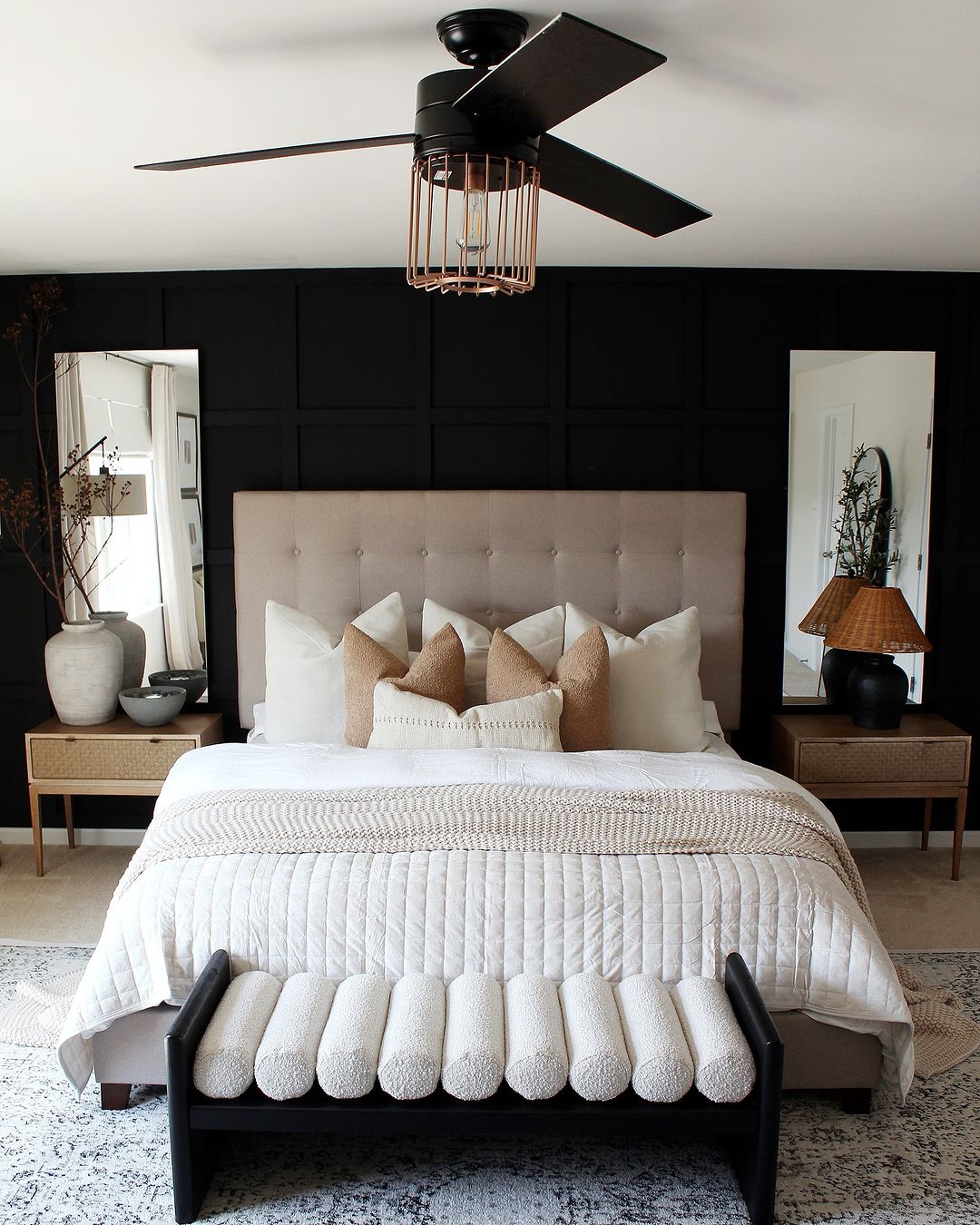
Image by myhousefromscratch
“Mirrors are an excellent tool in transitional design. They not only enhance natural light but also add a touch of elegance. A large, framed mirror with a traditional or modern style frame can serve as a statement piece while making the space feel larger.” — Shea McGee, Founder of Studio McGee.
16. Incorporate Metallic Finishes
Metallic finishes bring a hint of luxury to transitional interiors. Finishes like matte black or brass offer a subtle yet impactful way to blend traditional elegance with modern simplicity.
Whether in light fixtures, cabinet hardware, or furniture accents, metallics provide a sophisticated gleam without overwhelming the design.
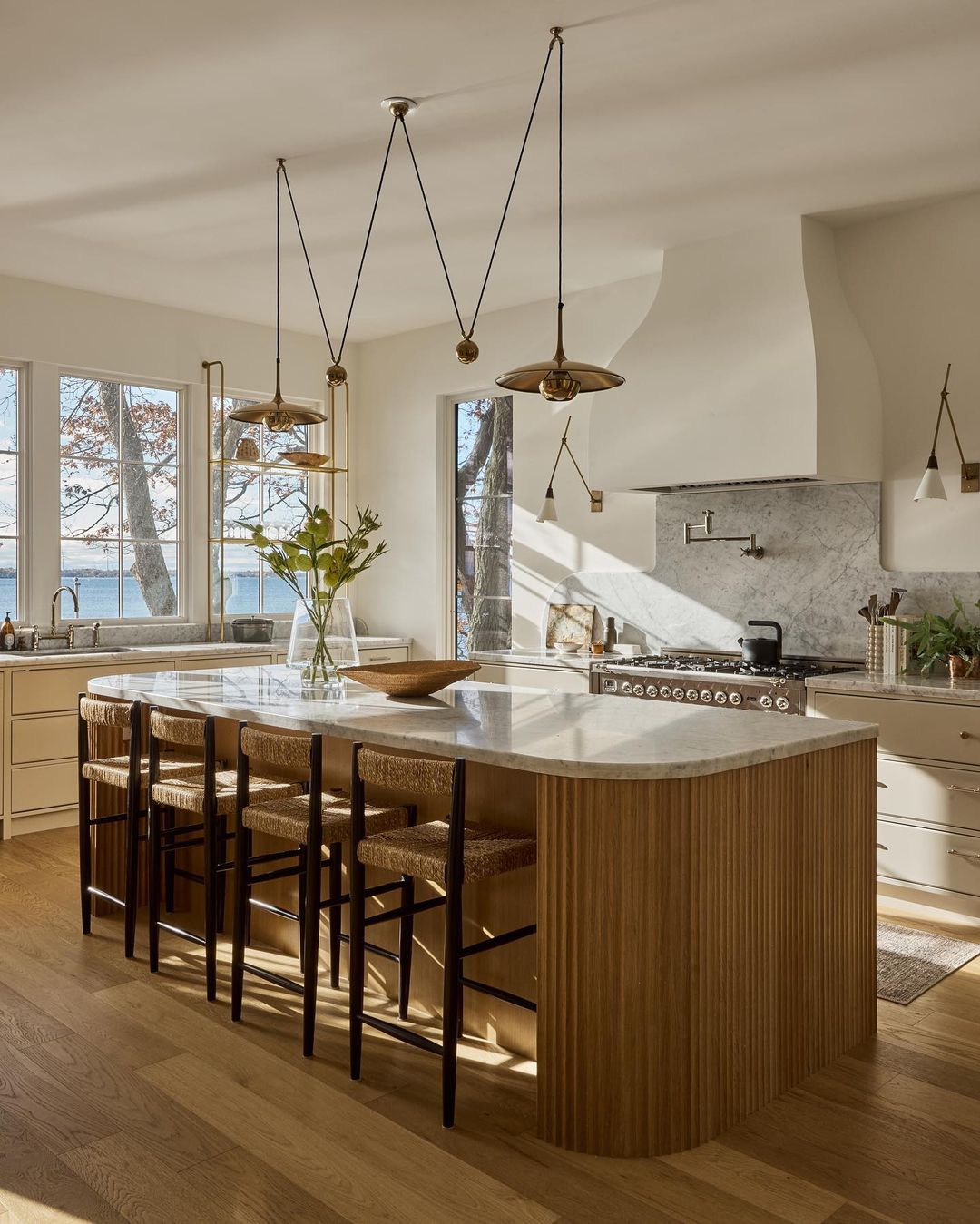 Image by samsacksdesign
Image by samsacksdesign
“Metallic finishes, especially in brass or matte black, add a touch of luxury to transitional interiors. Whether it’s a metallic lamp or cabinet hardware, these finishes bridge the gap between traditional opulence and modern sleekness.” — Jean Stoffer, Founder of Stoffer Home.
17. Focus on Transitional Window Treatments
Window treatments are a subtle yet essential element in transitional design. Combining functional shades, such as Roman blinds, with more elegant drapery offers a perfect blend of modern convenience and traditional style. The key is to select fabrics and colors that complement both ends of the design spectrum.
“Window treatments are often overlooked but play a huge role in transitional design. Roman shades paired with classic drapes offer the best of both worlds—functional simplicity with a dash of traditional elegance.” — Marie Flanigan, Founder of Marie Flanigan Interiors.
18. Keep the Floor Plan Open
An open floor plan is ideal for transitional design as it creates a fluid connection between spaces.
By minimizing walls and barriers, you allow the modern and traditional elements to interact freely, ensuring that no space feels too rigid or isolated. This setup also enhances natural light and makes rooms feel larger and more inviting.
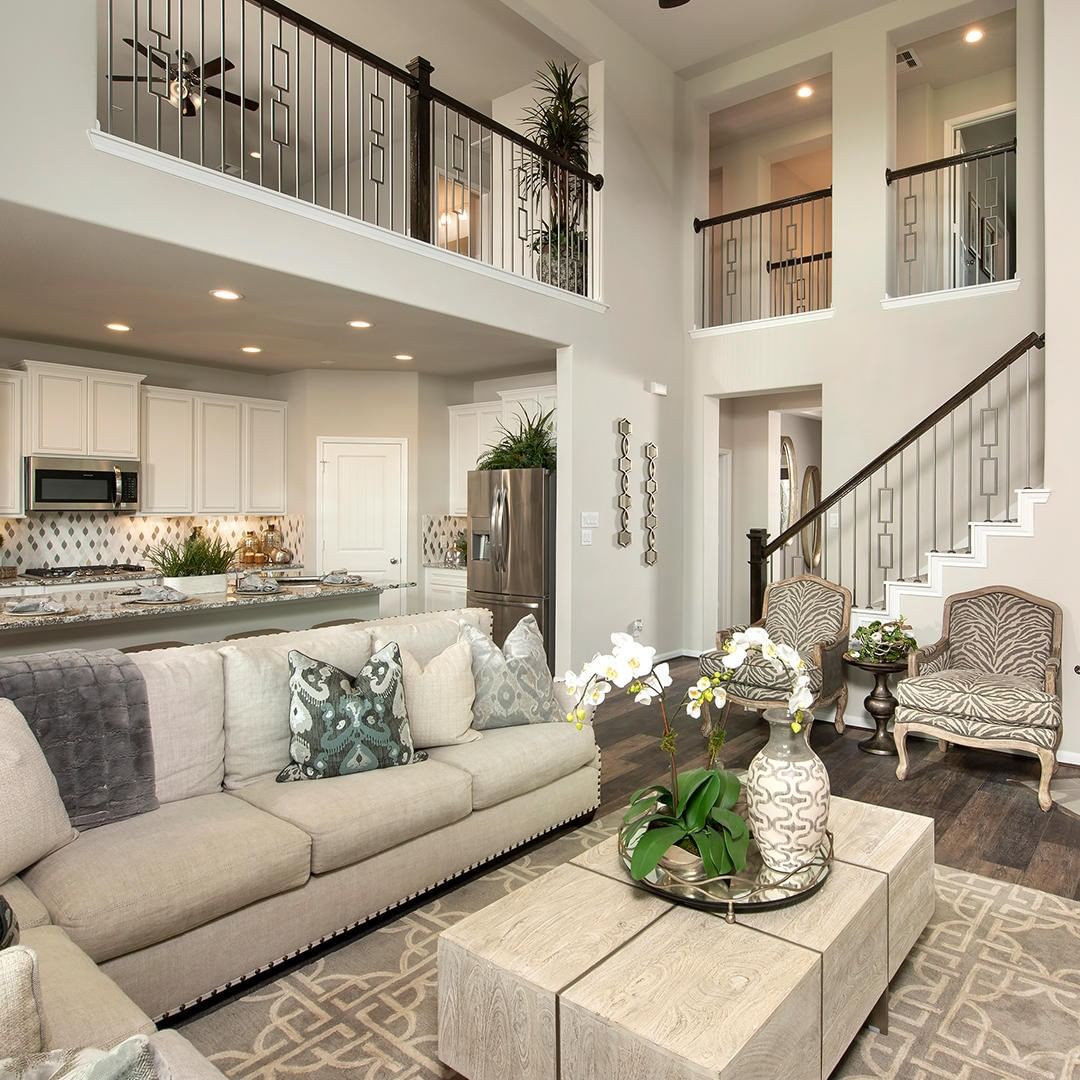
Image by drhorton
“Open floor plans are a key feature of transitional design. By keeping spaces open and flowing, you allow the blend of traditional and modern elements to coexist seamlessly, making the room feel both spacious and cohesive.” — Amber Lewis, Founder of Amber Interiors.
Read – 25 Amazing And Beautiful Brown Leather Couch Ideas You Will Love
19. Incorporate Statement Chairs
A bold statement chair can serve as both a functional and decorative piece in a transitional space. Look for chairs with modern silhouettes upholstered in classic fabrics, like linen or leather.
These pieces add character and become conversation starters while tying together the blend of contemporary and traditional styles.
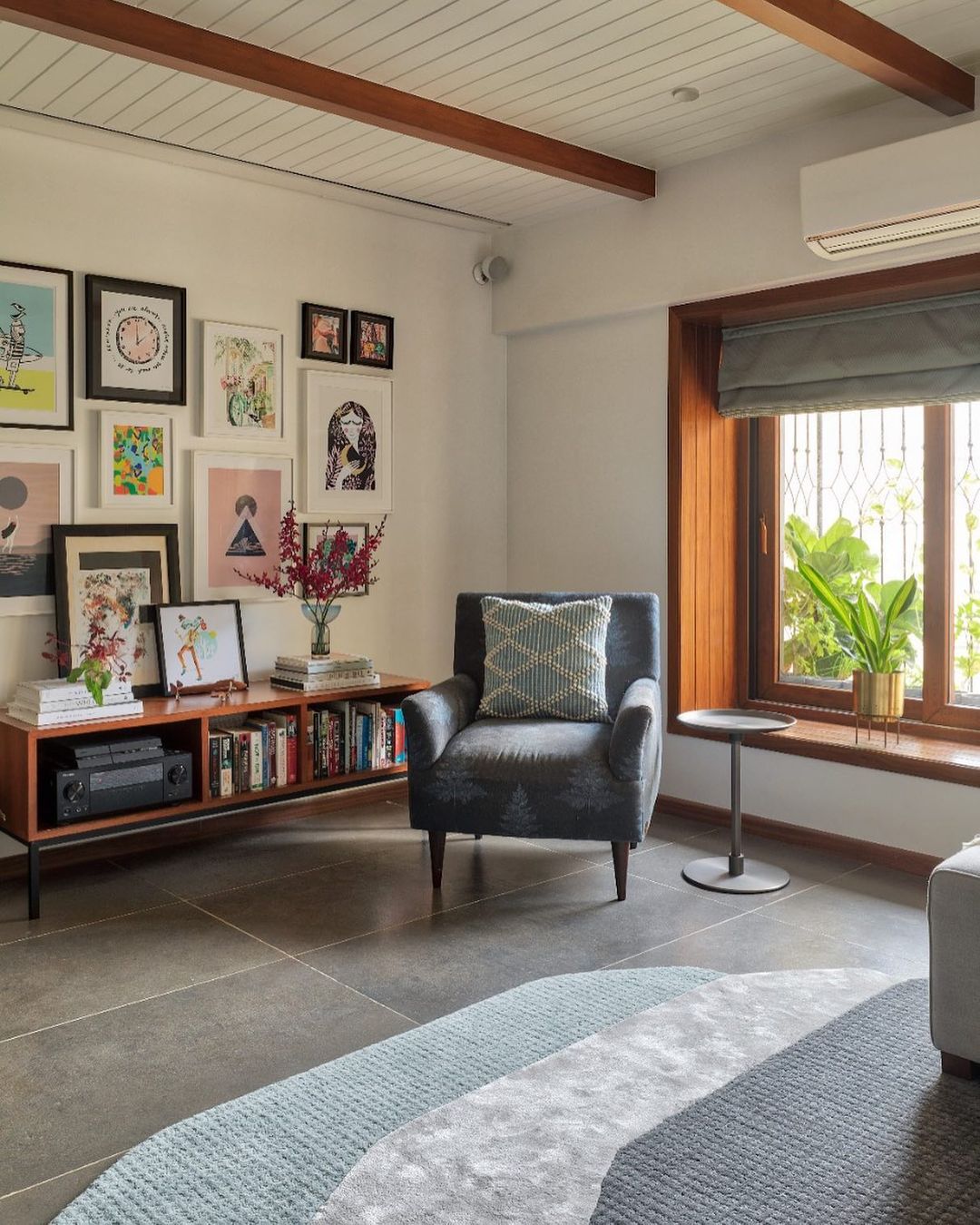 Image by rasneetananddesign
Image by rasneetananddesign
“A bold, well-designed chair can become a focal point in transitional spaces. Choose chairs that have modern lines but are upholstered in classic fabrics like leather or linen for a striking yet timeless look.” — Breegan Jane, Interior Designe.
20. Keep Technology Subtle
Incorporating technology into transitional spaces should be done thoughtfully. Hidden tech, such as built-in speakers, discrete wiring, or smart-home devices, ensures that modern conveniences are present without disrupting the room’s overall aesthetic. The goal is to maintain the seamless blend of form and function.
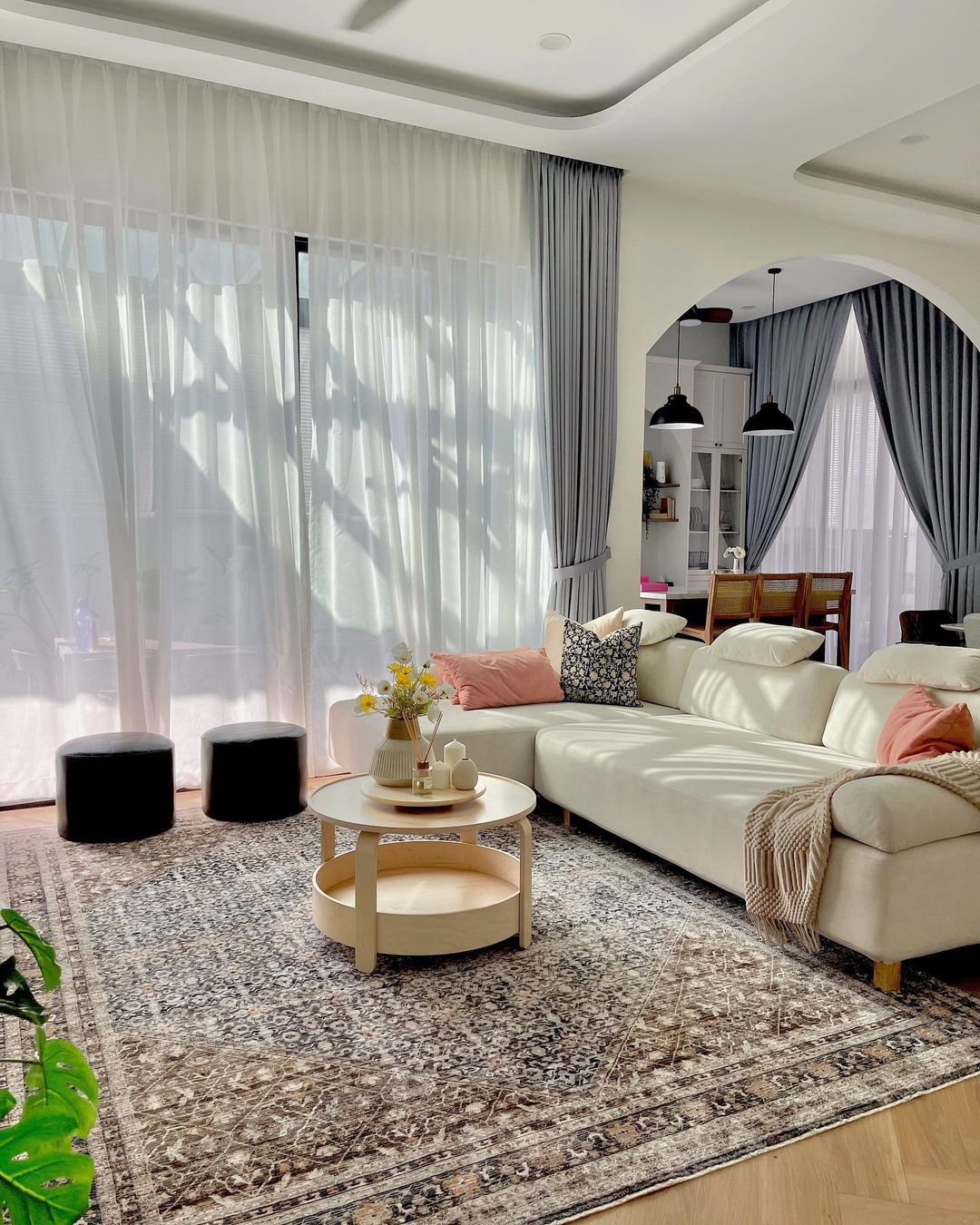 Image by rumahsena
Image by rumahsena
“Incorporating technology in transitional spaces should be discreet. Hidden wiring, built-in speakers, or sleek smart home devices help keep the design seamless while still providing all the benefits of modern living.” — Thomas O’Brien, Founder of Aero Studios.
By blending the best of both worlds—modern and traditional—transitional style allows you to create a home that is sophisticated yet inviting, fresh yet familiar. It’s a versatile design approach that adapts to evolving tastes, ensuring your space remains stylish for years to come.
